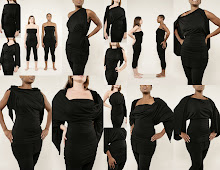His "Do more with less" credo is point number 4 in my Utilitarian Chic manifesto. I recently entered the Buckmister Fuller Challenge. This year, they were calling for a design science revolution. I was so excited, because I finally found an outlet to talk about my projects and philosophy in a way that was comprehensive. This is what they were looking for:
We're looking for entries that are:
- Comprehensive — addressing the interaction of key issues responsible for present conditions; aims to solve multiple problems without creating new ones;
- Anticipatory — factoring in critical future trends and needs as well as potential long term impacts of implementation;
- Ecologically responsible — reflecting nature's underlying principles while enhancing the Earth’s life-support systems;
- Feasible — relying on current technology and existing resources;
- Verifiable — able to withstand rigorous empirical testing;
- Replicable — able to scale and adapt to a broad range of conditions.
For several years, I've been intermittently designing, developing and producing products focused on product life cycle extension, zero-waste design, mass-customization and mobility.
Initially I was planning on getting a number of separate disciplines within Parsons and the New School to come together to design a course around Staying Power. Mainly because I was beyond frustrated with the notion of planned obsolescence as an integral part of the typical American business model. Throwaway electronics, clothing, furniture and other consumer soft goods were of particular interest.
I tackled clothing first, since had already began working on furniture solutions a while back, and because it was the most accessible and familiar medium, and it also accounts for 7% of consumer waste, according to the EPA Office of Solid Waste.





0 comments:
Post a Comment